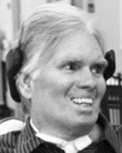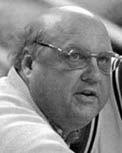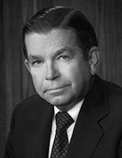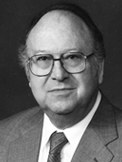 Cleone Peterson Eccles BS’57 died April 5, 2013, after a courageous battle with cancer. She was 78.
Cleone Peterson Eccles BS’57 died April 5, 2013, after a courageous battle with cancer. She was 78.
Born in Fairview, Utah, on March 9, 1935, Eccles grew up in Sanpete County, helping on the family’s sheep ranch and working at the local “Merc” and at the Sanpete Valley Bank. Following high school, she attended the University of Utah, where she met her lifelong love, Spencer Fox Eccles. She graduated in 1957 with a degree in elementary education and, one year later, after four years of courtship, married Spence. After living in New York for two years and in Boise, Idaho, for 10, they moved with their young family to Salt Lake City in 1970 and quickly became integral to the life of their community and state. The couple were partners in all their endeavors—family, banking, and philanthropy—and Spence relied heavily on Cleone as his most valued sounding board. Their partnership flourished for more than 54 years.
Cleone Eccles’ commitment to her community was confirmed by her years of service on many boards, including the U’s Board of Trustees, as well as the boards of the U Alumni Association, Red Butte Garden, KUED, the College of Nursing, Neighborhood House, Ballet West, the Utah Symphony Guild, and the Junior Leagues of Boise and Salt Lake. She was a faithful member of The Church of Jesus Christ of Latter-day Saints and served in both the Primary and Relief Society. In 2001, she was honored by the Junior League with its Legacy of Excellence Award. The U honored Eccles with its Distinguished Alumna Award in 1995 and an Honorary Doctorate in 2005. Together, she and Spence received Utah’s 2010 Philanthropic Leadership Award and were named the 2012 Humanitarians of the Year by Catholic Community Services. Although Cleone served with dedication in the community, her highest priority was family.
She is survived by her husband; her daughters C. Hope Eccles (Randal K. Quarles), Lisa Eccles, and Katie Eccles (David J. Burnett); her son Spencer P. Eccles (Kristine Lifferth); and 10 grandchildren. She also is survived by sisters Miriam Mason and Cathy Bryan (Jack); her sister-in-law, Betty Jo Peterson; and many nieces, nephews, and friends. She was preceded in death by her parents as well as her brothers Lewis A. Peterson and Albert L. Peterson.
 R. E. “Earl” Holding BS’51 died of natural causes on April 19, 2013. He was 86.
R. E. “Earl” Holding BS’51 died of natural causes on April 19, 2013. He was 86.
Holding was born November 29, 1926, the youngest of three children of Franklin Eugene and Reva Johnson Holding, Mormons who lost everything in the 1929 stock market crash. The family lived at the Covey and Hillcrest apartments in Salt Lake City, where Holding did yard work for 65 cents an hour. He graduated from West High School in 1944, and by the time he went into the U. S. Air Force, he had saved $10,000.
After serving in Europe during World War II, he returned to Salt Lake City, obtained a bachelor’s degree in civil engineering from the University of Utah, and, in 1949, married Carol Orme. Earl and Carol were seldom apart throughout their 64 years of marriage.
In 1952, the Covey family offered Earl and Carol the opportunity to manage Little America, a gas, food, and lodging enterprise located on pre-interstate Highway 30 (now I-80) in southwestern Wyoming. Holding turned the isolated motel into a popular stop for travelers and truckers. He added dozens of pumps and put up signs for several hundred miles in all directions proclaiming this the world’s largest gas station. During their 13 years there, he and Carol started their family and fell in love with Wyoming and its people. From that time on, Wyoming became home.
The foundation of Holding’s business enterprises was Sinclair Oil, which he bought in 1976, eight years after acquiring a shuttered refinery in Casper, Wyoming. Holding’s fossil-fuel empire with the green-dinosaur logo grew to include two refineries, 1,000 miles of pipeline, and 2,600 gas stations in 22 states
In Utah, Holding’s efforts helped bring the 2002 Olympic Winter Games to Salt Lake City. He was an enthusiastic supporter and believed the Games stood for the ideals of athletic excellence and international cooperation.
At the time of his death, Holding was considered to be among the largest landowners in America with some 400,000 acres across the West. He owned the Grand America Hotel in Salt Lake City, as well as the ski resorts Snowbasin, in Utah, and Sun Valley, in Idaho.
Holding is survived by his wife, their three children, Anne, Kathleen, and Stephen, their spouses, twelve grandchildren, and his brother, Ralph. He was preceded in death by his parents, his sister, Helen Jean, and his close business partner and childhood friend, Kenneth Y. Knight.
 Brooke Hopkins died July 31, 2013, in his Salt Lake City home. He was 71.
Brooke Hopkins died July 31, 2013, in his Salt Lake City home. He was 71.
Roger Brooke Hopkins was born March 25, 1942, in Baltimore, where he attended Calvert and Gilman schools. He also attended Hotchkiss, in Lakeville, Connecticut, where he first discovered his love of British literature. He obtained a bachelor’s degree (1964) and a doctorate (1970) in English from Harvard University, where he also taught for five years. His academic training included a year on fellowship at Oxford.
Divorced from Nancy Doe Hopkins, he began teaching at the University of Utah in 1975, where he met another new faculty member, Margaret Battin (known as Peggy), who would become his wife in 1986. Hopkins remained at the U for the rest of his career, receiving accolades and awards for his teaching and writing. His primary field was Romantic poetry, including Wordsworth, Keats, Byron, and Shelley, although he also explored the genre of autobiography, issues in psychoanalysis, and many other areas. He was a popular professor and won many teaching awards, including the University of Utah Distinguished Teaching Award, and he was selected as University Professor. He also served as a department chair and helped launch the University’s writing program.
Hopkins loved traveling the world with Peggy and friends, trekking in the Himalayas, whipping up a gourmet meal, or enthusiastically dancing in blues bars. Shortly after retiring, he was injured in a double-bike accident, which left him paralyzed from the neck down. Despite the constraints of life in a wheelchair, perpetual respiratory problems, and sometimes severe pain, he was able to teach ten OSHER courses to mostly retired professionals in his living room, including Thoreau’s Walden, The Iliad, The Odyssey, The Aeneid, The Divine Comedy, The Canterbury Tales, Shakespeare’s sonnets, Moby Dick, and Shakespeare’s The Tempest. These courses became a graceful and heartfelt capstone to his career. Together with Peggy, he also wrote an extensive account of the challenges and deep insights in facing quadriplegia, Love Under Trial, an early version of which is available at www.brookeandpeggy.blogspot.com.
He is survived by his wife, his sister Lisa Hopkins Wheeler, stepchildren Michael Battin and Sara Battin Pearson, and four grandchildren, Kendra Battin, Jack Battin, Maxwell Pearson, Sydney Pearson, and niece Isabelle Hopkins Wheeler.
 Rick Majerus died December 1, 2012, while awaiting a heart transplant. He was 64.
Rick Majerus died December 1, 2012, while awaiting a heart transplant. He was 64.
Majerus was born February 17, 1948, in Sheboygan Falls, Wisconsin, 60 miles north of Milwaukee. He graduated from Marquette University High School in 1966 and played junior varsity basketball at Marquette University, his hometown college, where he graduated in 1970.
Majerus led five different Division I basketball programs during a 25-year career. He began his coaching career at St. Sebastian Grade School in Milwaukee, later moving to Marquette University High School. In 1971, Majerus joined Marquette University as an assistant coach under mentor Al McGuire and then worked under Hank Raymonds until taking over as Marquette head coach in 1983. Majerus left Marquette in 1986 and became a professional basketball assistant coach with the Milwaukee Bucks of the National Basketball Association during the 1986-1987 season. He returned to college basketball for good in 1987 as head coach at Ball State University, where he remained until 1989.
Majerus coached the University of Utah’s Runnin’ Utes from 1989 to 2004, leading them to the NCAA Championship game in 1998. He was named the 1998 John Wooden National Coach of the Year after his Utes played Kentucky for the national championship. The No. 3 seeded-Utes defeated two No. 1 seeds (Arizona and North Carolina) during their run to the title game. In his 15 seasons, Utah earned a bid to the NCAA Tournament 11 times, making the Elite Eight in 1997 and the Sweet 16 in 1991 and 1996.
Despite missing most of three seasons due to health or personal reasons, Majerus averaged 21 wins a season on the hill, amassing a record of 323-95 and winning nearly 80 percent of his games. A five-time Western Athletic Conference Coach of the Year, Majerus led the Utes to nine regular-season conference championships and four conference tournament crowns.
Majerus was briefly married from 1987 to 1989. He is survived by sisters Jodi Majerus and Tracy Dowd, as well as an extended “family” of players, fans, and fellow coaches. Majerus was remembered at a funeral Mass in Milwaukee on December 8. His father, Raymond, died of a heart attack at 63 in 1987. Majerus was devoted to his mother, Alyce, before her death in 2011.
 Susan Miller died February 22, 2013, in the company of friends after a 10-month battle with cancer. She was 70.
Susan Miller died February 22, 2013, in the company of friends after a 10-month battle with cancer. She was 70.
Miller was born December 10, 1942, in Washington, D.C. She obtained a bachelor’s degree from Valparaiso University and her doctorate from the University of North Carolina, in Chapel Hill. She directed composition programs at Ohio State University and the University of Wisconsin-Milwaukee before coming in 1983 to the University of Utah, where she became the founding director of the University Writing Program.
She wrote award-winning books on rhetoric and the teaching of writing. Most prominent among those are Rescuing the Subject, Textual Carnivals, and Assuming the Positions: Cultural Pedagogy and the Politics of Ordinary Writing. More recently, she published Trust in Texts: A Different History of Rhetoric, and an anthology, The Norton Book of Composition Studies, which she edited.
Never one to rest on her laurels, Miller put her knowledge of rhetoric and composition to a new use in 2009 when she started a writing group for physicians, medical students, and staff at the University of Utah Health Sciences Center who wanted to write about their experiences but had no formal training in writing.
Miller is survived by her brother, Jack Allen Miller (Barbara) of Fredericksburg, Virginia; nephew Nathanial Christian Miller (Nell) and great niece Mary Nell Caroline Miller of Charleston, South Carolina; as well as devoted friends and colleagues and her beloved dog, AJ. She was preceded in death by her father, Allen Ward Miller; mother, Margretta Boose Bowers; and stepfather, Clarence Harmon Bowers. In lieu of flowers, her family suggests contributions to the American Hospice Foundation.
 Lennie Sam Skaggs, Jr., died of natural causes on March 21, 2013, surrounded by his family. He was 89.
Lennie Sam Skaggs, Jr., died of natural causes on March 21, 2013, surrounded by his family. He was 89.
Skaggs was born August 9, 1923, in Yakima, Washington, to L.S. Skaggs, Sr., and Vivian Howe Skaggs. The family moved in 1932 to Salt Lake City, where Skaggs attended local schools and Westminster College. He served in the U.S. Army during World War II and participated in the Allied invasion of Europe in 1944. After the war, Skaggs joined his father’s company, Payless Drug Stores, and became manager of the store in Boise, Idaho. While there, he met Aline Wilmot, and they were married on February 27, 1949. When Skaggs’s father suddenly died at age 55, the couple moved to Salt Lake City, and Skaggs assumed the job of president and chief executive officer of Payless Drug Stores, running 11 stores at age 27.
By the time Skaggs retired in 1993, he had built the 11-store chain into American Stores Co., a retailing giant with more than $20 billion in annual sales and more than 280,000 employees. During these years, he helped change the way Americans shop by combining grocery and drugstores under one roof. Under the banner of American Stores, Skaggs assembled some of the most well-known brands in America, including Alfa Beta, Jewel Stores, Lucky Stores, Sav-On Drug, Acme Markets, Rea & Derick, OSCO Drug, Star Markets, Buttrey’s, Katz Drug Stores, and Skaggs Drug Stores.
For more than 50 years, he and Aline, through their ALSAM Foundation, gave hundreds of millions of dollars to education through scholarships, school construction, and donations to research institutes and universities. They had six major universities name their pharmacy school or pharmacy building in their family’s honor, including the University of Utah’s L.S. Skaggs, Sr. Pharmacy Hall, built in the 1960s. The new L.S. Skaggs Pharmacy Research Institute at the U, which adjoins Skaggs Hall, was dedicated just three weeks after Sam’s death.
Skaggs is survived by his wife and their four children, Susie Balukoff (AJ) Boise, Idaho; Mark S. Skaggs (Cindy), Eureka Springs, Arkansas; Claudia S. Luttrell, Salt Lake City; Don L. Skaggs (Teresa), Salt Lake City; 15 grandchildren; and 37 great-grandchildren. He was preceded in death by one sister, Helen Lowen of Seattle, Washington.
 Beverley Taylor Sorenson BS’45 died of natural causes on May 27, 2013. She was 89.
Beverley Taylor Sorenson BS’45 died of natural causes on May 27, 2013. She was 89.
Sorenson was born in Salt Lake City on April 13, 1924, to Bessie Elinor and Frank Campbell Taylor. She was the fifth of six children and later wrote of how much she appreciated the books and music of her childhood, saying, “My little mother wove a magic web throughout… that left a silver lining for all who lived within.” Sorenson was determined to see the same pattern and example perpetuated into the next generation.
She was a daydreamer who always “looked for the good” and believed in setting goals. When she was young, she wrote them down: Go to college; save $1,000; be a kindergarten teacher; marry; become a mother (in that order). She accomplished all of those goals. By the time she had graduated from East High School and then the University of Utah in the spring of 1945, she had saved her $1,000. She boarded a train headed for New York to teach kindergarten at a Quaker school.
Her life took a dramatic turn when she met James LeVoy Sorenson at her church in Manhattan. He proposed to her on their third date, and they were married the next summer, on July 23, 1946. They settled in Salt Lake City, raised their children, and celebrated nearly 62 years of marriage before his death on January 20, 2008.
A dedicated philanthropist, Beverley Taylor Sorenson supported numerous worthy causes through her family’s Sorenson Legacy Foundation, working to ensure that the arts were integrated into the elementary education of Utah’s children. She created Art Works for Kids, and in 2008, the Utah State Legislature adopted the arts-focused teaching model she and her team developed, naming it in her honor: the Beverley Taylor Sorenson Arts Learning Program.
In 2008, the Sorenson Legacy Foundation gave a $15 million donation to the University of Utah for a biomedical and neurosciences building and $12 million for an interdisciplinary arts and education complex. The $24 million Beverley Taylor Sorenson Arts and Education Complex, now under construction and scheduled for completion by the end of 2013, will ensure that her dream of infusing the arts into diverse aspects of education becomes a lasting reality.
Sorenson is survived by her eight children, 49 grandchildren, and 65 great-grandchildren. Read more about her in this article from the Winter 2011-12 issue of Continuum.
 Milton Elliot Wadsworth BS’48 PhD’51 died January 31, 2013, after a brief struggle with pancreatic cancer. He was 90.
Milton Elliot Wadsworth BS’48 PhD’51 died January 31, 2013, after a brief struggle with pancreatic cancer. He was 90.
Wadsworth was born February 9, 1922, in Salt Lake City to Thomas Guy Wadsworth and Agnes Flockhart Wadsworth. He attended Lowell Elementary, Roosevelt Junior High, and East High schools. He worked as a riveter at an aircraft factory in Burbank, California, before the 1941 attack on Pearl Harbor, and then served as an infantry officer in the U.S. Army during World War II.
After the war, Wadsworth began a lifelong relationship with the University of Utah, where he received bachelor’s and doctoral degrees in metallurgical engineering. Wadsworth and his future wife Mirian Bailey met in 1939 when they enrolled in the Spring Flowers of the Wasatch as freshmen at the University of Utah. They were both members of the U.S. Army and were the first couple married in uniform at the Fort Douglas Chapel, in 1943.
In 1968, Wadsworth was asked by the Ford Foundation to head up a graduate program in metallurgy at the University of the Philippines. For the next two years, from their home in Manila, he and his family traveled throughout Asia, including a family road trip through the back country of Cambodia in the spring of 1969, unaware of the United States’ secret bombing campaign.
During his career at the University of Utah, Wadsworth served twice as chair of the Department of Metallurgical Engineering, as well as director of the Utah Mining and Minerals Research Institute, and dean of the College of Mines and Earth Sciences. He received the University’s Distinguished Research Award, Distinguished Teaching Award, and the Rosenblatt Prize. He served as president of the American Institute of Mining, Metallurgical and Petroleum Engineers and was a life member of the American Society of Metals. Wadsworth won numerous professional and academic accolades, held five patents and two honorary doctorates, and published 145 papers.
He is survived by his wife, Mirian; daughters Kathryn Davis, Jane Wadsworth, Amy Wadsworth (David Richardson), Leslie Wadsworth-Smith (Alan Smith), and Margaret Morrison (Richard); and 19 grandchildren. He is preceded in death by his daughter Cristine Blanch, sons-in-law Thomas Blanch and Jon Davis, and grandchildren Collin Davis, Ellen Marie Morrison, and Laura Elizabeth Blanch. Interment was at Wasatch Lawn. In lieu of flowers, family suggests contributions to the University of Utah’s Milton E. Wadsworth Endowment fund online here or by mail, care of Leslie Bigler, College of Mines and Earth Sciences, University of Utah, 115 S. 1460 East Rm. 205, Salt Lake City, Utah 84112-0102.
 Homer Warner BA’46 MD’49 died November 30, 2012, from complications of pancreatitis. He was 90.
Homer Warner BA’46 MD’49 died November 30, 2012, from complications of pancreatitis. He was 90.
Warner was born April 18, 1922, to Homer (Pug) and Grace Richards Warner. He played football at both East High School and the University of Utah, where he was a member of the Sigma Chi fraternity. During World War II, he enlisted in the Naval Air Corps, where he was trained to be a carrier-based fighter pilot. After the war, he returned to the U, where he met Katherine Ann “Kay” Romney. They received their bachelor’s degrees and later married in the Salt Lake Temple.
After graduating with his medical doctorate, Warner continued his training in Dallas, at the Mayo Clinic, and at the University of Minnesota, where he received a doctoral degree in physiology in 1953. He returned to Utah, where he opened a cardiovascular laboratory at LDS Hospital and studied waveforms as a potential path to diagnosing heart patients. After the U bought its first digital computer in 1960, Warner worked with graduate students to develop a tool to effectively diagnose congenital heart disease, but doctors were skeptical. Two years later, he became the chairman of what is now considered the first program to grant degrees in medical informatics.
In 1968, Warner wrote his first version of a software program to evaluate patient data to guide physicians. He had been inspired by seeing an intensive care unit nurse overwhelmed by information from sensors. As he further developed his Health Evaluation Through Logical Processing program, or HELP program, it expanded to include information about drugs, lab tests, pulmonary function testing, patients’ medical history, and more. It is now considered one of the nation’s first electronic medical records and is still operational 40 years later at Intermountain Healthcare hospitals.
Warner founded the journal Computers and Biomedical Research in 1968 and remained its editor for the next 24 years. In 1977, he authored a medical informatics textbook that is still used today.
Colleagues say that Warner’s research continues to redefine medicine. Modern intensive care units can be traced back to the electronic systems he built to monitor heart patients in the mid-1950s. And his creation of the HELP program set the stage for a new academic field and multi-billion-dollar health IT industry.
After his wife’s death in 2006, Warner married their lifelong friend Jeanne Okland in 2009. After her passing, he married June Okland Cockrell.
Warner is survived by his wife June; sister Emma Lou Thayne (Mel) and brother D. Gill Warner (Nedra); sister-in-law Marian Warner; children Katherine Black (Richard), Stephen Warner (Elizabeth), Homer Warner, Jr. (Rochelle), Willard Warner (Mary Lee), Ann Bradley (John), and Jodi Wagner (Tom); 23 grandchildren; and 39 great-grandchildren. In addition to his first two wives, Homer was preceded in death by his brother, Richard. A public service was held on December 6, at the Foothill Stake Center in Salt Lake City. Interment was at Wastach Lawn Cemetery. In lieu of flowers, the family suggests donations to the Homer R. Warner Scholarship Fund in Medical Informatics at the University of Utah.